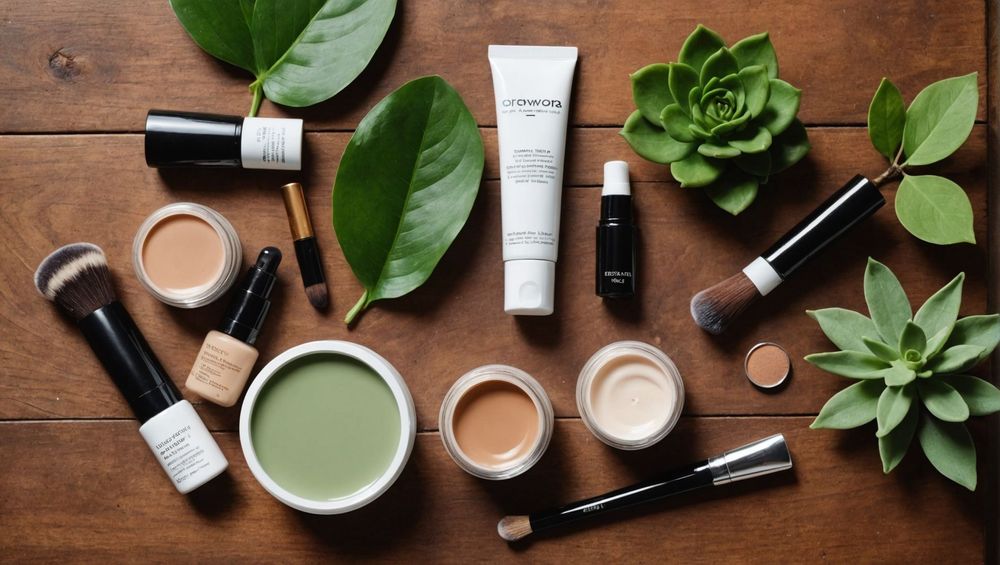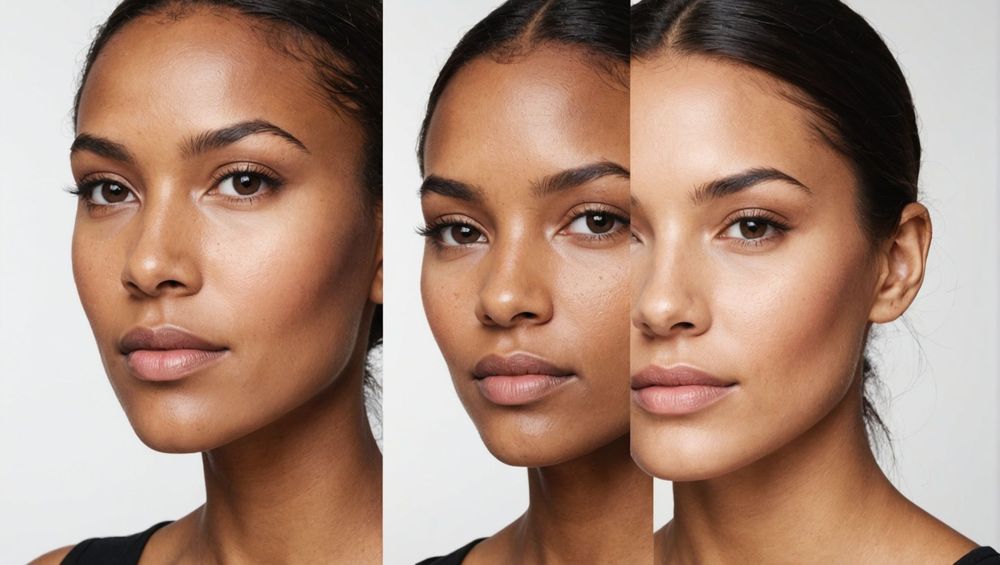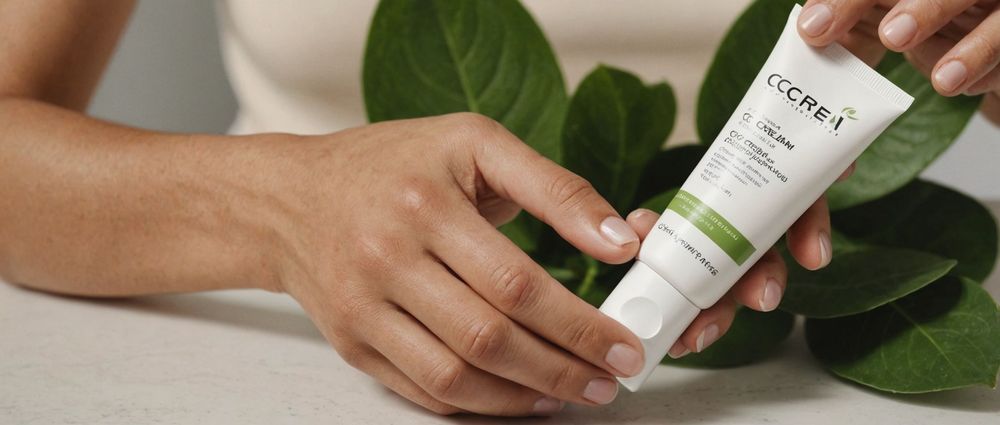
5 Reasons Why Your Foundation Is Patchy – Plus How to Fix It
A patchy foundation can be a frustrating experience for anyone trying to achieve a flawless makeup look. There are several reasons why your foundation might not be applying evenly, and understanding these can help you fix the issue effectively. From improper skin preparation to using the wrong tools, the causes can range from simple to complex. In this article, we’ll explore five common reasons for patchy foundation and provide actionable solutions to help you achieve a smooth, even complexion.
1. Lack of Proper Skin Preparation

One of the most important steps in applying foundation is ensuring your skin is properly prepped. If you skip this step, your makeup is likely to cling to dry patches and create an uneven appearance. Proper skin preparation involves cleansing, exfoliating, and moisturizing your face to create a smooth canvas. Here’s how to do it effectively:
- Cleanse: Start with a gentle cleanser that suits your skin type to remove dirt and oil.
- Exfoliate: Use a facial scrub or a chemical exfoliant at least once a week to slough off dead skin cells.
- Moisturize: Apply a lightweight moisturizer to hydrate your skin. Make sure it absorbs completely before moving on to foundation.
By preparing your skin properly, you’ll create a smoother base for your foundation, minimizing patchy spots throughout the day.
2. Choosing the Wrong Foundation Formula

The type of foundation you choose can significantly impact how well it applies to your skin. Different formulas cater to different skin types, and using the wrong one can lead to patchiness. For instance, if you have dry skin, a matte foundation might exacerbate flakiness, while oily skin may make a dewy finish too slippery. Here are some foundation types to consider based on your skin:
- Liquid Foundations: Great for most skin types, as they provide buildable coverage.
- Cream Foundations: Ideal for dry skin, as they offer more hydration.
- Powder Foundations: Best suited for oily skin, as they help absorb excess oil.
Consider your skin type when selecting a foundation to ensure it adheres well and doesn’t create a patchy finish.
3. Incorrect Application Technique
Even with the right product, applying foundation incorrectly can lead to a patchy look. Using the wrong tools or method can hinder your foundation’s ability to blend seamlessly into your skin. For optimal results, consider the following application techniques:
- Beauty Blenders: Ideal for a natural, airbrushed finish, as they allow for seamless blending.
- Foundation Brushes: Provide precise application and are great for fuller coverage.
- Fingers: Perfect for warming the product up, allowing for a more skin-like finish.
Remember to apply foundation in sections, working quickly to prevent it from setting before you have a chance to blend. This will help ensure an even finish across your entire complexion.
4. Climate and Environmental Conditions
Your environment plays a crucial role in how your foundation sits on your skin. Humidity, temperature, and even air pollution can affect your makeup’s performance. In humid conditions, foundations may slide off or become patchy due to excess sweat and oil production. Conversely, dry air can dehydrate your skin, leading to flakiness. To combat these challenges, consider these tips:
- Setting Sprays: Use a setting spray designed for your skin type to help lock in your makeup.
- Primers: Invest in a quality primer that suits your skin type, providing a base to help foundation adhere better.
- Powders: Use a light dusting of setting powder to absorb excess oil throughout the day.
Adjusting your makeup routine based on environmental factors will help maintain a flawless foundation look.
5. Skin Conditions and Texture Issues
Lastly, underlying skin conditions such as acne, eczema, or excessive dryness can contribute to a patchy foundation application. When your skin texture is uneven, your makeup may adhere inconsistently. To manage this, consider incorporating targeted skincare products that address your unique skin concerns. Treatments might include:
- Exfoliating Masks: Help smooth rough patches and improve skin texture.
- Hydrating Serums: Provide deep moisture to dry areas, promoting an even application.
- Spot Treatments: Address blemishes or inflammation without affecting surrounding areas.
By treating any skin conditions you have, you’ll enhance the overall appearance of your base makeup.
Conclusion
Achieving a flawless foundation finish requires attention to detail at every step, from skin preparation to the final application. Understanding the reasons behind patchy foundation and knowing how to address them can make all the difference in your makeup routine. By ensuring proper skin care, selecting the right products, using appropriate application techniques, and accounting for environmental factors, you’ll be well on your way to achieving that desired smooth, even complexion. Remember that consistency is key; revisiting these steps each time you apply makeup will help you stay on track for a perfect finish.
FAQs
1. How can I prevent my foundation from looking patchy throughout the day?
To prevent patchiness, ensure you start with an excellent skincare routine, choose products suited for your skin type, and apply setting products like powder or sprays to lock your makeup in place.
2. What should I do if my foundation is still patchy even after following these tips?
If you’re still experiencing patchiness, consider reassessing your foundation choice and application tools. It might also help to consult with a makeup artist for personalized advice.
3. Is there a specific primer recommended for oily skin?
Look for oil-free mattifying primers that help control shine and provide a smooth base for foundation to adhere to oily skin.
4. Can my skin’s health affect how my foundation looks?
Absolutely! Skin conditions like dryness, flakiness, or inflammation can lead to uneven application, so it’s essential to maintain a good skincare routine.
5. How often should I exfoliate for the best makeup application?
Exfoliating once or twice a week is generally sufficient, but it can vary based on your skin type. Just ensure you aren’t over-exfoliating, as this can lead to sensitivity or irritation.

